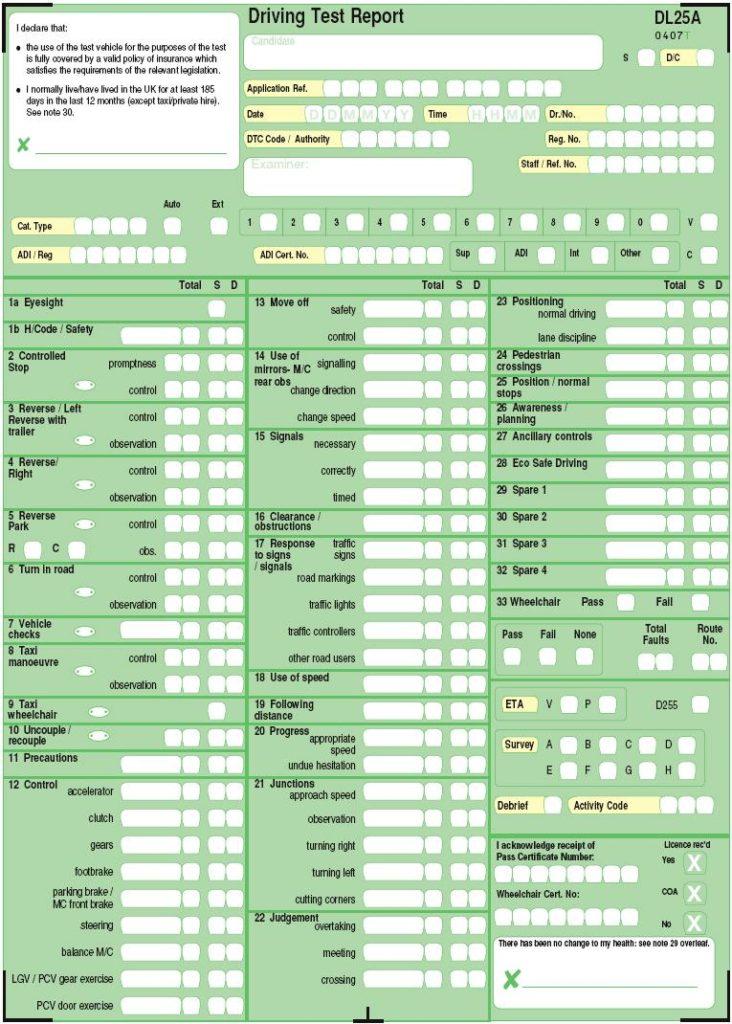Online driving tutorials
The practical driving test
I leave the show me tell me questions until quite late on in a students training. The driver must be able to multitask and have exceptionally good control of the vehicle.
During the practical driving test, you'll be asked one question at the driving test centre and one whilst on the move. It's important to practise these show me tell me questions whilst actually driving. You'll be required to perform the show me section at your convenience. Meaning when you're ready.
Make sure you know exactly what your going to do before you do it. If you draw a mind blank, don't panic. Take the hit and say pass. It's just a minor. You don't want to start looking down and hitting all the buttons and dials in the car randomly. Any loss of control here could spell disaster.
The DVSA explanation of what happens on the practical test.
Car driving test requirements
Test candidates must satisfy the examiner as to their ability to carry out properly the activities and perform competently, without danger to and with due regard for other road users, the manoeuvres below.
Eyesight
Read in good daylight a registration plate on a car containing both letters and numbers from a distance of 20.5 metres.
Vehicle safety checks
Answer vehicle safety check questions (show me/tell me).
Preparation to drive
- Check the car doors are closed.
- Adjust the seat to obtain the correct driving position.
- Adjust the mirrors and seat belt.
- Technical control of the vehicle
- Start the engine and move off smoothly when going ahead, at an angle and on a slope.
- Accelerate to suitable speeds whilst maintaining a straight course, including during gear changes.
- Adjust speed to negotiate left or right turns at junctions, possibly in restricted spaces, whilst maintaining control of the vehicle.
- Brake accurately and stop where directed.
- Perform any two of the following manoeuvres:
- Reverse in a straight line and reverse right or left round a corner while keeping within the correct traffic lane;
- Turn the vehicle to face the opposite way, using forward and reverse gears;
- Park the vehicle (parallel, oblique or right-angle).
- Behaviour in traffic
- Observe road alignments, markings, signs and potential or actual risks.
- Communicate with other road users using the authorised methods.
- React appropriately in actual risk situations.
- Comply with road traffic regulations and the instruction of the police and traffic controllers.
- Move off from the kerb or a parking space.
- Drive with the vehicle correctly postioned on the road, adjusting speed to traffic conditions and the line of the road.
- Keep the correct distance between vehicles.
- Change lanes.
- Pass parked or stationary vehicles and obstacles.
- Approach and cross junctions.
- Turn right and left at junctions or to leave the carriageway.
- Where the opportunity arises - (a) Pass oncoming vehicles, including in confined spaces (b) Overtake in various situations (c) Approach and cross level-crossings.
Minimum test time requirements
Not less than 30 minutes. The minimum time requirement and the total time of between 38 and 40 minutes from signing the DL25 (the examiners score sheet) to stopping the engine at the end of the test.
Below is a section taken straight out of the examiners hand book, telling them how they should treat the candidate going for the exam. Note how they are asked to take into consideration nerves, being asked to drive in unusual circumstances and not compare them to a licence holder.
General competence to drive
The object of the test is to ensure that the candidate is well grounded in the basic principles of safe driving, and is sufficiently practised in them to be able to show, at the time of the test, that they are a competent and considerate driver and are not a source of danger to themselves or to other road users.
Examiners should remember that, in most cases, candidates will be novices and will have had only limited driving experience, and will have been accompanied by a professional instructor or other tutor. It would therefore be unreasonable to expect them to demonstrate the degree of skill and road sense of a seasoned driver.
It must also be appreciated that many candidates will also be more nervous during the driving test than when driving with their instructor or with a friend. A pleasant outgoing approach, not only in the waiting room and on the way to the vehicle, but throughout the test is particularly important to help candidates to relax.


